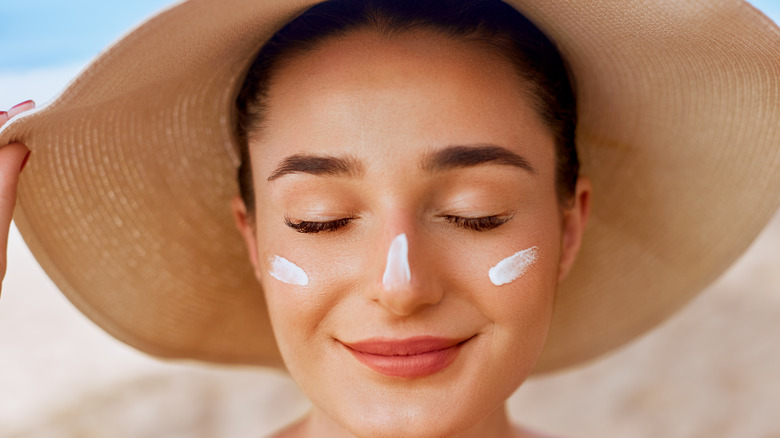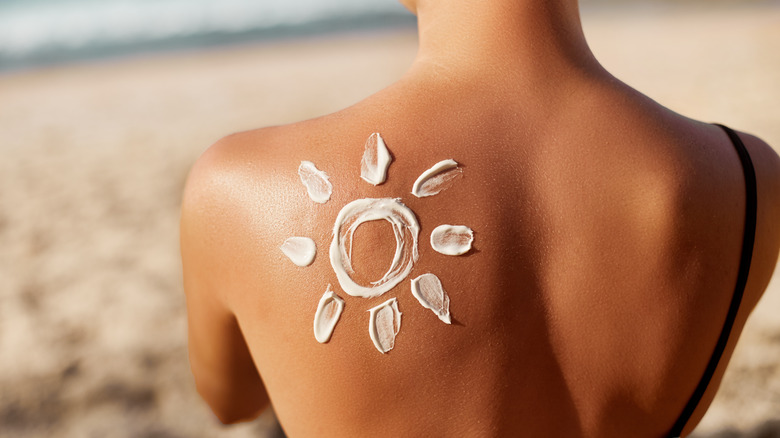The Real Reason European Sunscreen Is Better Than Its American Counterpart
The ozone layer is the earth's shield against harmful ultraviolet rays from the sun. It helps to absorb UVA and UVB radiation before it gets to the ground (per National Geographic). Years of pollution have thinned the important ozone layer in our atmosphere, and although we have made concessions that are helping rebuild this important layer of stratosphere, it means, that in the interim, our bodies need a lot more protection in the form of sunscreen.
If you didn't already know, sunscreen is important for all skin types. Regardless of skin tone or season, you should be applying it daily to help prevent skin cancer, skin damage, and premature aging throughout your lifetime (per Prevention). Today, sunscreen is more convenient than ever, including sprays, sticks, and roll-ons, so there is no excuse for skipping this important skincare step. But is there a difference between what we get in the United States and what our European friends across the Atlantic use?
The United States is falling short when it comes to quality
It may surprise you to learn that not all sunscreen is created equal. National regulations for ingredients differ worldwide, which can often cause issues when it comes time to manufacturing the items (per The National Reg Review). While you may think you are picking up a bottle of Europe's finest sunscreen in your nearest CVS, you are more often than not mistaken. In reality, the cream may be missing a few key ingredients because it is being sold stateside.
According to Healthline, America is way behind when it comes to quality sunscreen products. Many sun protectant creams are known to be greasier to wear and don't help prevent signs of aging. In addition, the FDA allows American sunscreens to use older ingredients; Europe has 27 approved substances, the United States only has 16. EWG reported that there are seven chemicals approved by the European Union that protect against rays known to cause cancer, but the U.S. only has three.
Most Americans are using a below average product
In February of 2019, the U.S. Food and Drug Administration (FDA) revealed its plans to make sunscreen safer. It was widely accepted that the FDA had lax regulations when it came to UVA protection, but the office was going to review the 16 already approved ingredients. In addition, a study at Memorial Sloan Kettering Cancer Center in New York revealed that only 11 out of 20 American sunscreen products met European standards (via Reuters).
It looks like some of the ingredients in Europe give better overall protection from the full spectrum of UVA light. Sadly, the United States paid too much attention to SPF rather than UV rays. Dr. Elizabeth Hale, a clinical associate professor of dermatology at NYU Langone Center, shared that researchers had been so focused on other elements that the UV rays slipped through the cracks for a while, saying, "but as we've learned more and more about UV rays, we've realized that UVA rays can cause mutations that lead to skin cancer, immunosuppression, and premature skin aging" (via Elemental). Sadly most Americans don't even use sunscreen regularly, and the ones who do are being offered subpar products (per Science Daily).


